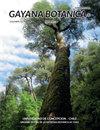Current state of critically endangered Neotinea ustulata (Orchidaceae) in Lithuania and report on a new record of the species
IF 0.5
4区 生物学
Q4 PLANT SCIENCES
引用次数: 0
Abstract
Neotinea ustulata (Orchidaceae) is a rapidly declining species throughout much of its range and is classified as critically endangered in Lithuania. Most of the historical occurrences of the species were concentrated in northwestern Lithuania, while the largest extant population was in the southern part of the country. In July 2022, a new population of Neotinea ustulata was discovered in an urbanised habitat in Šiauliai in northern Lithuania. A total of 84 individuals of this species were recorded in the population. In the southern part of Lithuania (Varėna distr.), the studied population comprised 86 individuals in 2002 and had decreased to 64 individuals by 2022. The total currently known population of the species in the country consists of about 150 individuals and remains critically endangered. The individuals of Neotinea ustulata studied in Šiauliai were significantly lower and had shorter inflorescences than the plants studied in Varėna district in 2002 and 2022. Since the population of Neotinea ustulata in Šiauliai is in an urbanised area, its conservation poses a significant challenge, making it difficult to make long-term predictions on the development of the population. Therefore, it is essential to continue searching for populations of Neotinea ustulata in the country, perform detailed studies on the plants’ reproductive potential, and properly organise the management and protection of extant populations and their habitats.立陶宛极危兰科新叶兰现状及新记录报告
Neotinea ustulata(兰科)是一个在其大部分分布范围内迅速下降的物种,在立陶宛被列为极度濒危物种。该物种的大部分历史发生地集中在立陶宛西北部,而最大的现存种群在该国南部。2022年7月,在立陶宛北部Šiauliai的一个城市化栖息地发现了一个新的Neotinea ustulata种群。种群中共记录到84只。在立陶宛南部(Varėna地区),研究的种群在2002年有86只,到2022年减少到64只。该国目前已知的该物种总数约为150只,仍然处于极度濒危状态。2002年和2022年Šiauliai地区研究的Neotinea ustulata个体数显著低于Varėna地区研究的植物,花序较短。由于Šiauliai的Neotinea ustulata种群位于城市化地区,因此对其保护提出了重大挑战,使得对种群发展进行长期预测变得困难。因此,有必要继续在国内寻找新木犀草(Neotinea ustulata)种群,对其生殖潜力进行详细研究,并妥善组织对现有种群及其栖息地的管理和保护。
本文章由计算机程序翻译,如有差异,请以英文原文为准。
求助全文
约1分钟内获得全文
求助全文
来源期刊

GAYANA BOTANICA
Agricultural and Biological Sciences-Plant Science
CiteScore
0.70
自引率
0.00%
发文量
8
审稿时长
6-12 weeks
期刊介绍:
The journal welcomes works carried out by scientists of all nationalities, and may be written in either English or Spanish. The journal receives works in systematic, taxonomy, floristic, ecology, physiology, morphology, development, conservation, cytology and phytochemical botany.
 求助内容:
求助内容: 应助结果提醒方式:
应助结果提醒方式:


